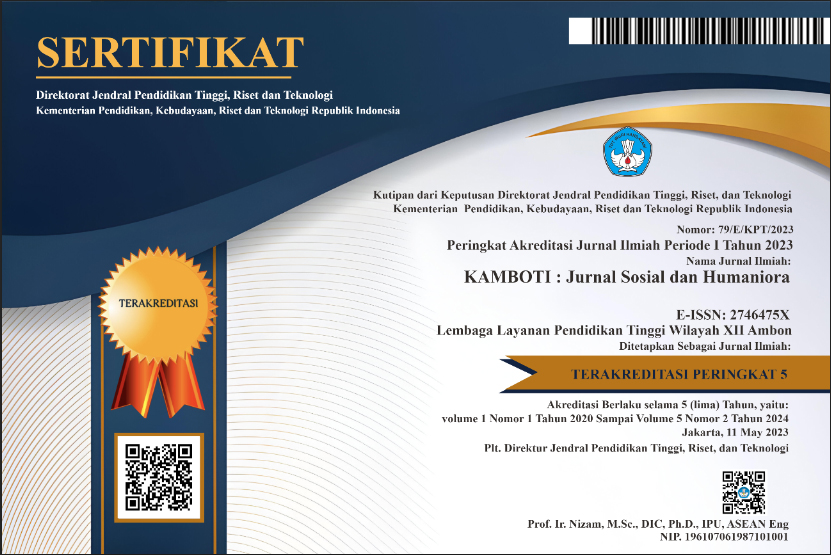Fungsi dan Pola Kalimat Bahasa Daerah Maba
DOI:
https://doi.org/10.51135/kambotivol2issue2page108-115Keywords:
Maba regional language, function, patternAbstract
The Maba Regional Language (BDM) is one of the regional languages found in North Maluku. BDM is spread over 5 sub-districts and 21 sub-districts/villages in East Halmahera Regency. Thus, the distribution of BDM speakers is very wide. BDM has not been studied from the aspect of pattern and function. In fact, in terms of patterns and functions, it has differences with other regional languages in Indonesia, so BDM needs to be studied in order to enrich the treasures of linguistics. In general, this study aims to foster and preserve BDM, specifically revealing its patterns and functions. This study uses a qualitative descriptive method with a syntactic approach. BDM functions include S-P, S-P-O, S-P-O-K, and S-P-Pel which form the sentence structure of BDM. BDM sentences have a S-P-O-pa pattern (description: pa = aspect marker), K-S-kb-P sentence patterns, and S-kb-P-O sentence patterns (description: kb = auxiliary verb). The function of filler in compound sentences is SP-O, while single sentences have verbal predicate, adjective predicate, noun predicate, numeral predicate, phrase predicate, repositional, and also has a uniqueness, namely having a verbal adverbial predicate structure (adverb). It can be concluded that the functions of functional sentences between one another. BDM has a unique pattern compared to other regional languages, including regional languages in the North Maluku region. As a pattern, its function cannot be converted into another function. BDM has a transitive function that oversees an intransitive function.
Downloads
Published
22-04-2022
Issue
Section
Articles
License
Copyright (c) 2022 KAMBOTI: Jurnal Sosial dan Humaniora

This work is licensed under a Creative Commons Attribution-ShareAlike 4.0 International License.
How to Cite
Mujudin, O., Gay, M., & La Ode Alumu, W. O. M. (2022). Fungsi dan Pola Kalimat Bahasa Daerah Maba. KAMBOTI: Jurnal Sosial Dan Humaniora, 2(2), 108-115. https://doi.org/10.51135/kambotivol2issue2page108-115



